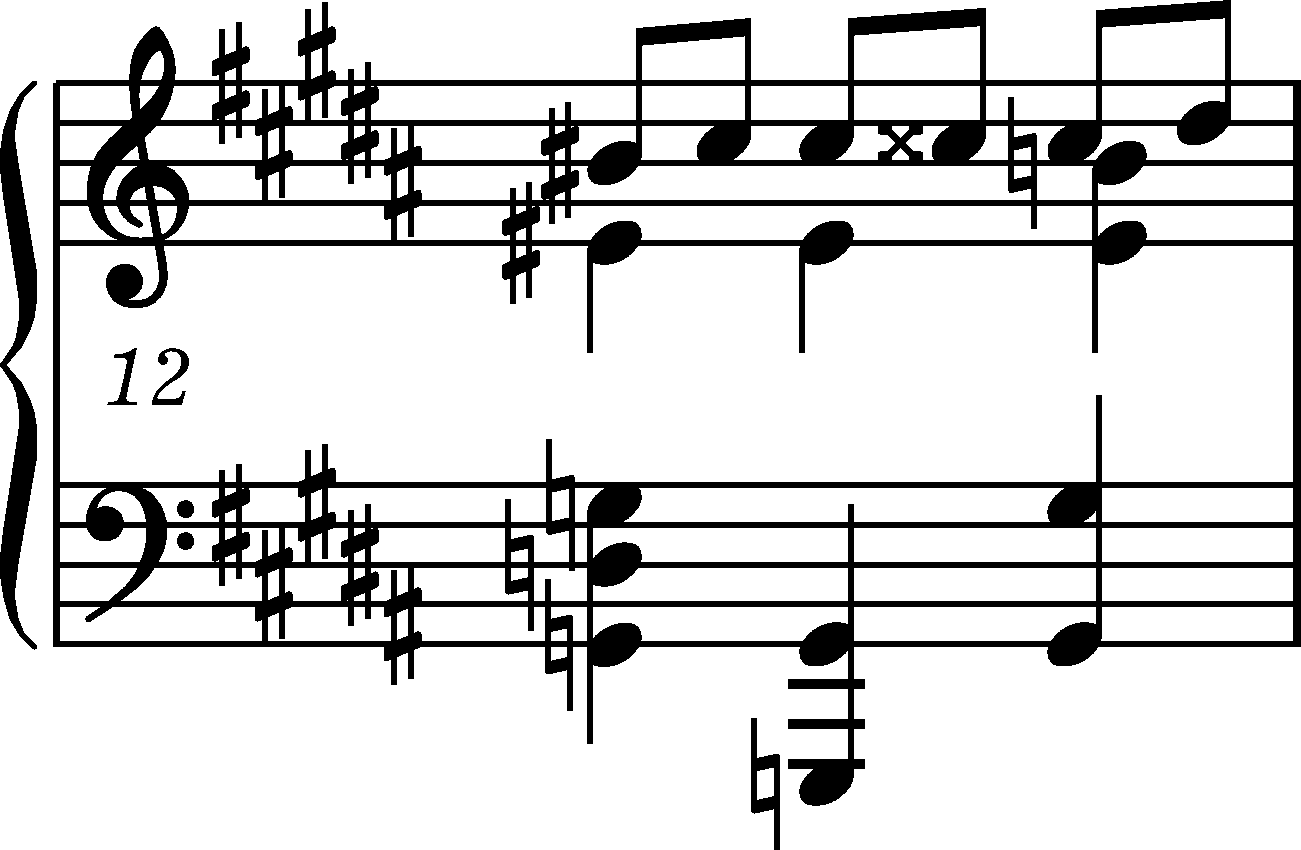



Issues : Main-line changes
|
b. 12
|
composition: Op. 28 No. 12, Prelude in G♯ minor
..
This bar was entirely crossed out in A and rewritten on adjacent staves – the R.H. above the crossing-out, while the L.H. – below. In the readable initial version, the regular steps of the R.H. quavers and the position of the 1st L.H. chord are preserved, while the f1 notes are written enharmonically as e category imprint: Corrections & alterations; Source & stylistic information issues: Omissions to cancel alteration , Corrections in A , Deletions in A , Accompaniment changes , Enharmonic corrections , Main-line changes |
|||||||
|
b. 12
|
composition: Op. 63 No. 2, Mazurka in F minor
..
Chopin's omission of accidentals defining the alteration occurred only exceptionally, so the lack of an accidental before the last quaver in As, which makes it an e category imprint: Differences between sources; Corrections & alterations issues: Main-line changes |
|||||||
|
b. 12
|
composition: Op. 2, Variation IV, primitive version
..
In AsI Chopin continues the principal scheme of contrary motion passages one quaver longer. In A version, Chopin made the arrangement of the figures in this bar look like in bar 8. category imprint: Differences between sources; Corrections & alterations issues: Accompaniment changes , Main-line changes |
|||||||
|
b. 12
|
composition: Op. 2, Variation IV, primitive version
..
The principal AsI version (normal-sized notes, on main staves) clearly deviates in terms of interval structure and hand position from the otherwise prevailing figuration scheme. This could have been the reason for the addition of an alternative version, which became the mandatory model already in the stage of writing A. See also bar 13. category imprint: Differences between sources; Corrections & alterations issues: Accompaniment changes , Main-line changes |
|||||||
|
b. 13-14
|
composition: Op. 64 No 1, Waltz in D♭ major
..
The earlier autographs prove Chopin's ongoing quest concerning the smartest and most suggestive formula for the idea of a thread unfolding from a spinning ball. The idea – according to the testimony of Wilhelm von Lenz* – was suggested to the pupils by Chopin himself, using the words "it should be unfolding as [a thread] from a ball". Only in the final version, the melody, both in bars 5-7 and 13-15, has a homogeneous, smoothly "unfolding" form, without less or more evident sustentions (as it is in As and AI) or references to the initial phase of creation of an ostinato, spinning figure (as it is in AII and AIII). * W. von Lenz, Uebersichtliche Beurtheilung der Pianoforte-Kompositionen von Chopin [...], "Neue Berliner Musikzeitung" 18 IX 1872. category imprint: Differences between sources; Corrections & alterations issues: Chopin's hesitations , Main-line changes |

 1:
1:  . The corrections had been performed before the performance marks were introduced – the crossed-out version did not contain the following elements: accent, staccato dots, phrase mark, dashes marking the range of crescendo and pedalling marks. The
. The corrections had been performed before the performance marks were introduced – the crossed-out version did not contain the following elements: accent, staccato dots, phrase mark, dashes marking the range of crescendo and pedalling marks. The  restoring b1 on the 3rd beat of the bar was also missing.
restoring b1 on the 3rd beat of the bar was also missing. 2 in
2 in 

